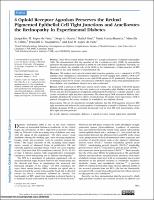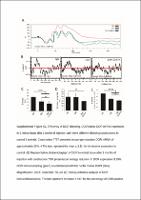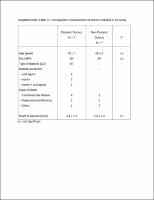| dc.contributor | Vall d'Hebron Barcelona Hospital Campus |
| dc.contributor.author | Lopes de Faria, Jacqueline M. |
| dc.contributor.author | Duarte, Diego A. |
| dc.contributor.author | García Ramírez, Marta |
| dc.contributor.author | Dátilo, Marcella N. |
| dc.contributor.author | Pasqualetto, Francieli C. |
| dc.contributor.author | Simó Canonge, Rafael |
| dc.date.accessioned | 2020-07-02T11:25:50Z |
| dc.date.available | 2020-07-02T11:25:50Z |
| dc.date.issued | 2019-09-03 |
| dc.identifier.citation | Lopes de Faria JM, Duarte DA, Simó R, García-Ramirez M, Dátilo MN, Pasqualetto FC, et al. δ Opioid receptor agonism preserves the retinal pigmented epithelial cell tight junctions and ameliorates the retinopathy in experimental diabetes. Investig Ophthalmol Vis Sci. 2019 Sep 3;60(12):3842–53. |
| dc.identifier.issn | 0146-0404 |
| dc.identifier.uri | https://hdl.handle.net/11351/5057 |
| dc.description | Diabetic retinopathy; Diabetes; Delta opioid receptor |
| dc.description.abstract | Purpose: Outer blood retinal barrier breakdown is a neglected feature of diabetic retinopathy (DR). We demonstrated that the agonism of the δ opioid receptor (DOR) by epicatechin preserves the tight junction proteins in ARPE-19 cells under diabetic conditions. Presently, we aimed to evaluate the possible role of the DOR on the maintenance of tight junction of RPE layer and on the early markers of experimental DR. Methods: DR markers and external retinal tight junction proteins were evaluated in CL57B diabetic mice submitted to intravitreous injection of short hairpin RNA (shRNA)-DOR (108 transducing units [TU]/mL) treated or not with DOR agonist (0.05 g/animal/d of epicatechin in drinking water) for 16 weeks. The presence of DOR in human retina from postmortem eyes from diabetic and nondiabetic donors were also performed. Results: DOR is present in RPE layer and in neuro retina. The treatment with DOR agonist prevented the upregulation of the early markers of retinopathy (glial fibrillary acidic protein, VEGF) and the downregulation of pigment epithelium-derived factor, occludin, claudin-1, and zonula occludens-1 tight junction expressions. The silencing of DOR in retina of diabetic mice partially abolished the protective effects of epicatechin. In human retina specimens, DOR is present throughout the retina, similarly in nondiabetic and diabetic donors. Conclusions: This set of experiments strongly indicates that the DOR agonism preserves RPE tight junctions and reduces the early markers of retinopathy in model of diabetes. These novel findings designate DOR as a potential therapeutic tool to treat DR with preservation of the RPE tight junction proteins. |
| dc.language.iso | eng |
| dc.publisher | Association for Research in Vision and Ophthalmology |
| dc.relation.ispartofseries | Investigate Ophthalmology & Visual Science;60(12) |
| dc.rights | Attribution-NonCommercial-NoDerivatives 4.0 International |
| dc.rights.uri | http://creativecommons.org/licenses/by-nc-nd/4.0/ |
| dc.source | Scientia |
| dc.subject | Neurotransmissors - Receptors |
| dc.subject | Retinopatia diabètica |
| dc.subject | Retina - Vasos sanguinis |
| dc.subject.mesh | Receptors, Opioid, delta |
| dc.subject.mesh | Diabetic Retinopathy |
| dc.subject.mesh | Blood-Retinal Barrier |
| dc.title | δ opioid receptor agonism preserves the retinal pigmented epithelial cell tight junctions and ameliorates the retinopathy in experimental diabetes |
| dc.type | info:eu-repo/semantics/article |
| dc.identifier.doi | 10.1167/iovs.19-26761 |
| dc.subject.decs | receptores opiodes delta |
| dc.subject.decs | retinopatía diabética |
| dc.subject.decs | barrera hematorretinal |
| dc.relation.publishversion | https://iovs.arvojournals.org/article.aspx?articleid=2751563 |
| dc.type.version | info:eu-repo/semantics/publishedVersion |
| dc.audience | Professionals |
| dc.contributor.authoraffiliation | [Lopes de Faria JM, Duarte DA, Dátilo MN, Pasqualetto FC] Renal Pathophysiology Laboratory, Investigation on Diabetes Complications, Faculty of Medical Sciences, State University of Campinas (UNICAMP), Campinas, Brazil. [Simó R, García-Ramirez M] Vall d’Hebron Institut de Recerca (VHIR), Barcelona, Spain. Centro de Investigación Biomédica en Red de Diabetes y Enfermedades Metabólicas Asociadas (CIBERDEM), Instituto de Salud Carlos III (ISCIII), Madrid, Spain |
| dc.identifier.pmid | 31529081 |
| dc.identifier.wos | 000486495800018 |
| dc.rights.accessrights | info:eu-repo/semantics/openAccess |



